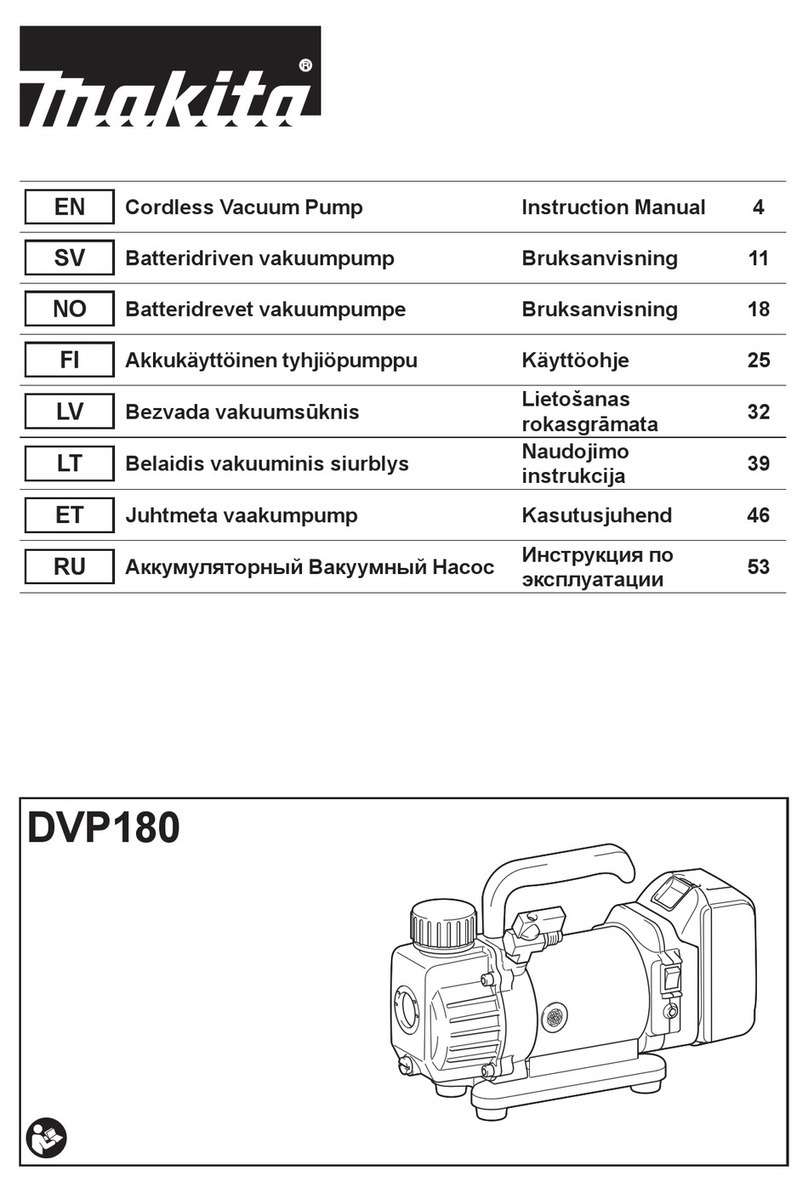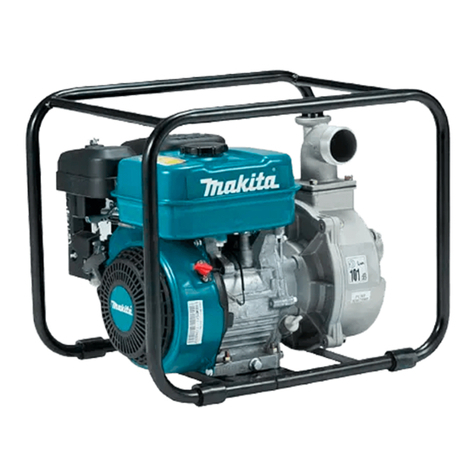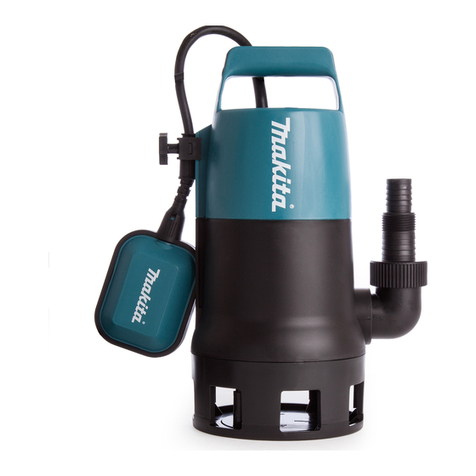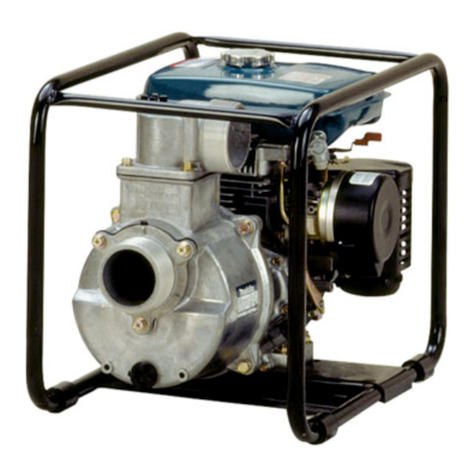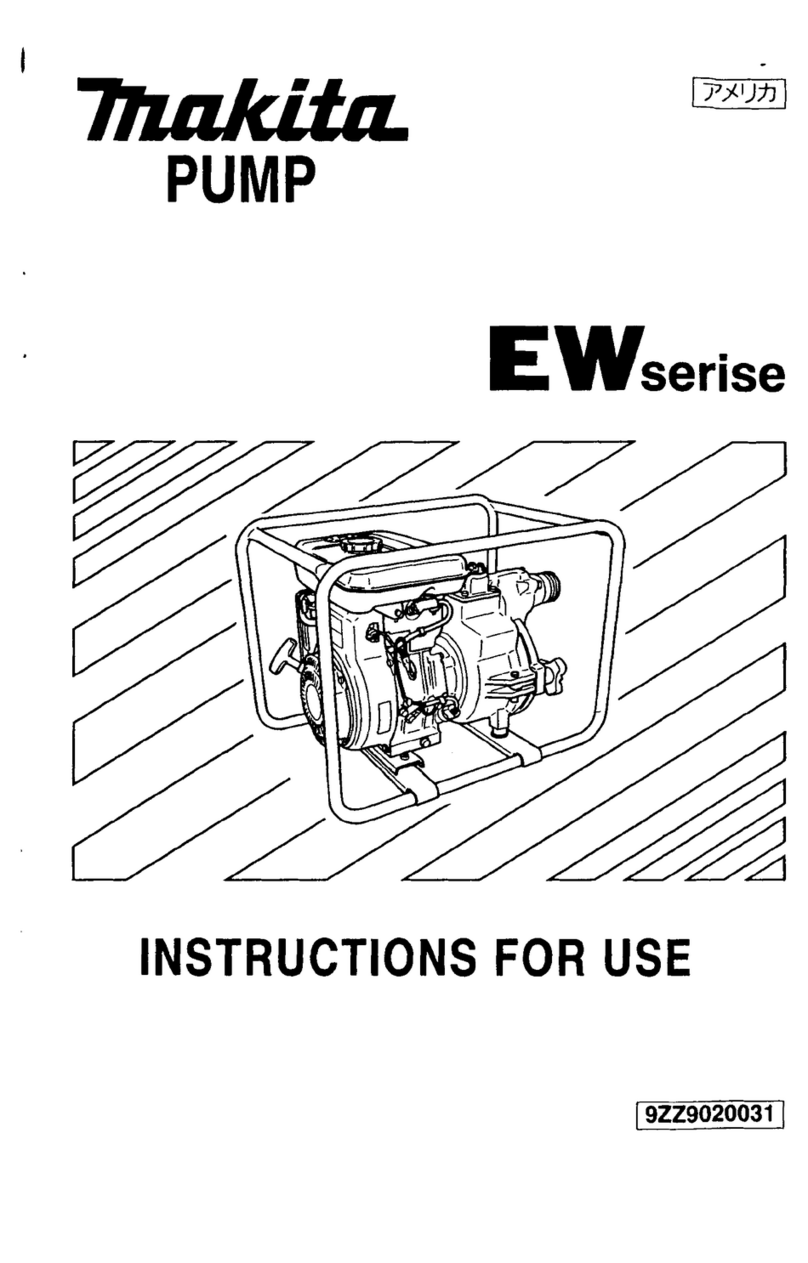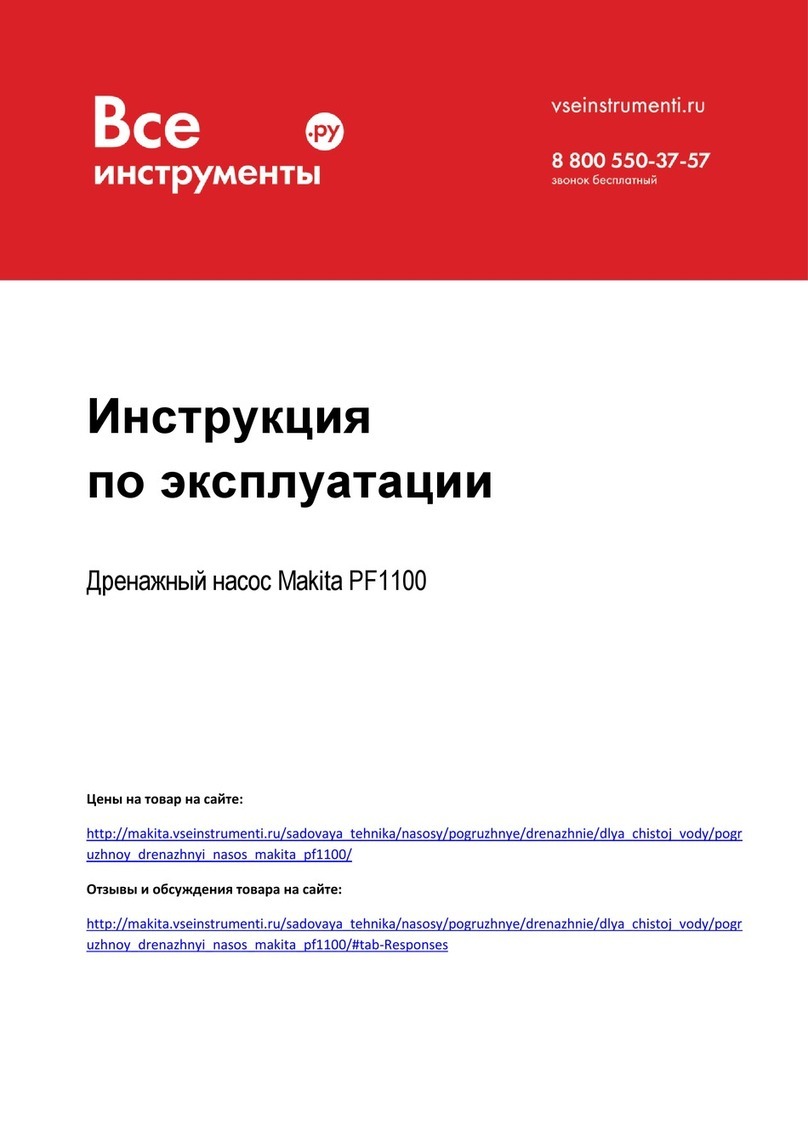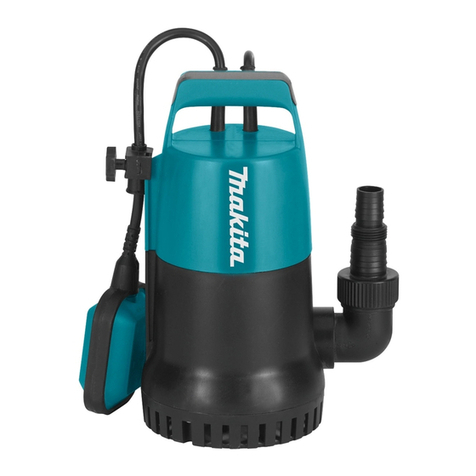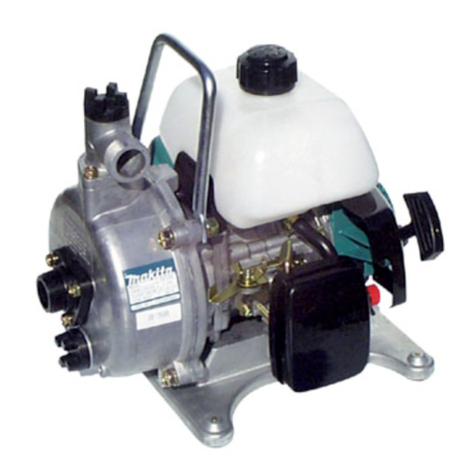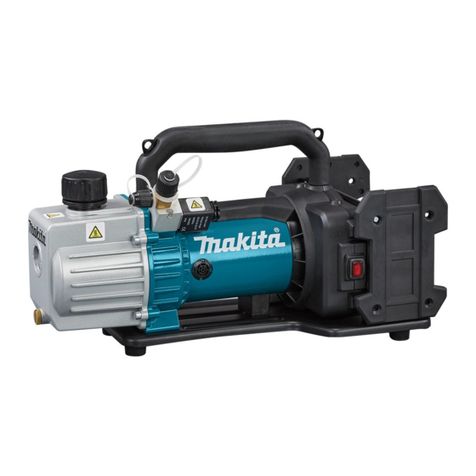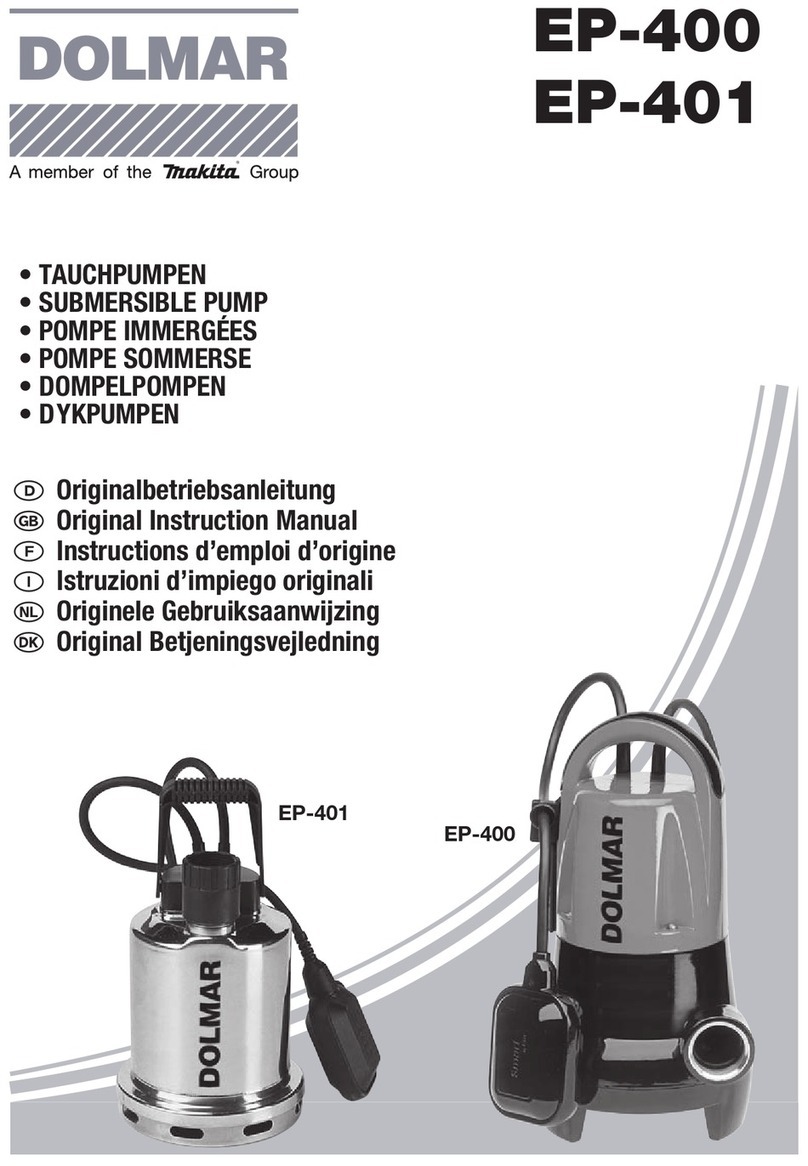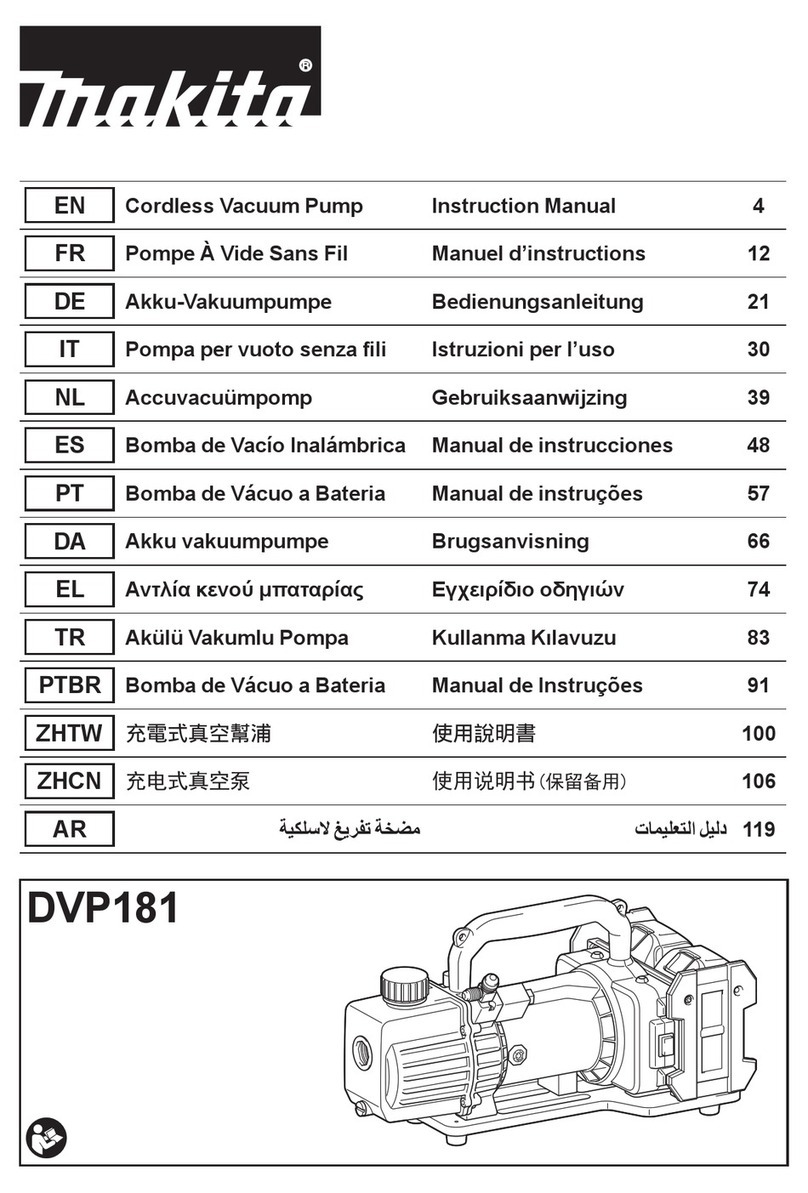
6ENGLISH
Power tool use and care
1. Do not force the power tool. Use the correct
power tool for your application. The co rrect
for which it was desi gned.
2. Do not use the power tool if the switch does not
turn it on and off. Any power tool that ca nnot be
co ntrolled with the sw itch is dangerous and must be
repaired.
3. Disconnect the plug from the power source and/
or remove the battery pack, if detachable, from
the power tool before making any adjustments,
changing accessories, or storing power tools.
Such preve ntive sa fety measu res reduce the risk of
st arting the power tool acci dentally.
4. Store idle power tools out of the reach of children
and do not allow persons unfamiliar with the
power tool or these instructions to operate
the power tool. Power tools are dangerous in the
hands of untrained users.
5. Maintain power tools and accessories. Check
for misalignment or binding of moving parts,
breakage of parts and any other condition
that may affect the power tool’s operation.
If damaged, have the power tool repaired
before use. Many acci dents are ca use d by poorly
maintained power tools.
6. Keep cutting tools sharp and clean. Properly
maintained cu tting tools with sh arp cu tting edges
are less like ly to bind and are easi er to co ntrol.
7. Use the power tool, accessories and tool bits
etc. in accordance with these instructions,
taking into account the working conditions and
the work to be performed. Use of the power tool
for operations different from those intended co uld
resu lt in a haza rdous si tuation.
8. Keep handles and grasping surfaces dry, clean
and free from oil and grease. Slippery handles
and grasp ing su rface s do not allow for sa fe handling
and co ntrol of the tool in unexp ect ed si tuations.
9. When using the tool, do not wear cloth
work gloves which may be entangled. The
entanglement of cl oth work glove s in the movi ng
Battery tool use and care
1.
manufacturer. A ch arger that is suitable for one
use d with another battery pack.
2.
designated battery packs. Use of any other
3. When battery pack is not in use, keep it away
from other metal objects, like paper clips, coins,
keys, nails, screws or other small metal objects,
that can make a connection from one terminal
to another. Shorting the battery terminals together
4.
from the battery; avoid contact. If contact
contacts eyes, additionally seek medical help.
or burns.
5. Do not use a battery pack or tool that is damaged
6.
or excessive temperature.
temperature above 130 °C may ca use exp losi on.
7. Follow all charging instructions and do not
charge the battery pack or tool outside the
Charging improperly or at temperatures outsi de
Service
1.
repair person using only identical replacement
parts. This will ensu re that the sa fety of the power
tool is maintained.
2. Never service damaged battery packs. Servi ce
of battery packs sh ould only be performed by the
manufact urer or authorize d se rvi ce provi ders.
3. Follow instruction for lubricating and changing
accessories.
Cordless vacuum pump safety
warnings
Read ca refully inst ruct ions in the literature, st rict
obse rva nce of proce dures is main co ndition for operator
sa fety.
1. The vacuum pump is a machine used to
evacuate refrigeration and air conditioning
it for other applications. Doing so may resu lt in
acci dents.
2. Always inspect the vacuum pump for oil leaks
before use.
3. Check the oil level and condition (deterioration,
4. Wear safety glasses and gloves when handling
refrigerant; avoid contact with refrigerant,
blindness and injuries may result to operator.
5.
extremely hot or cold environments.
SAVE THESE INSTRUCTIONS.
WARNING: DO NOT let comfort or familiarity
with product (gained from repeated use) replace
strict adherence to safety rules for the subject
product.
MISUSE or failure to follow the safety rules stated
in this instruction manual may cause serious
personal injury.
Important safety instructions for
battery cartridge
1. Before using battery cartridge, read all
instructions and cautionary markings on (1)
battery charger, (2) battery, and (3) product
using battery.
2. Do not disassemble battery cartridge.

